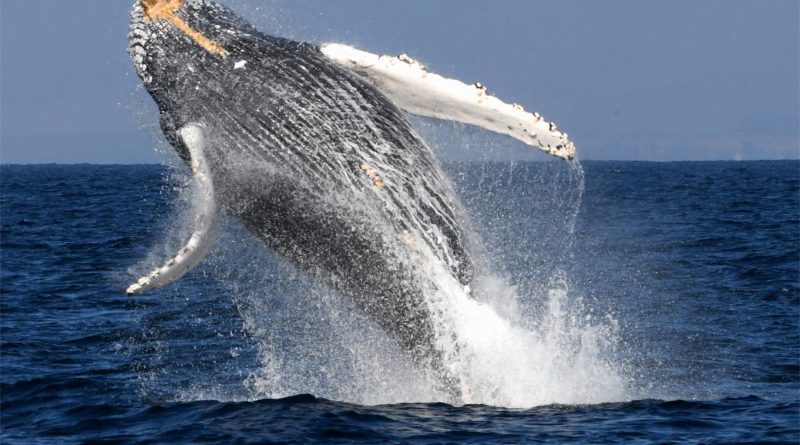Lower Speeds to Reduce Ship Strikes
A Conservation group is calling for greater protection for whales being struck by ships; lower speeds can reduce whales colliding with ships in the Santa Barbara Channel.
SAN FRANCISCO—On April 28, the National Marine Fisheries Service received a petition from the Center for Biological Diversity asking for them to consider making the current voluntary 10-knot speed limit (11-12 mph) in whale feeding grounds to become mandatory.
Each year large baleen whales including blue, humpback, and fin whales return to their feeding grounds between spring and fall. When these large ships travel through the Santa Barbara Channel the lower speed gives whales a better chance of surviving ship strikes, if not avoiding them completely.
According to www. ransportgeograpfhy.org, most containerships are designed to travel at speeds around 24 knots, with “slow steaming” being between 18-20 knots, with 23 mph being the average.
“Endangered blue, humpback, and fin whales off California’s coast are too frequently struck and killed by ships,” said the petition, filed last week by Catherine Kilduff, a senior attorney with the center.
The federally protected whales return year after year to the same feeding spots as they migrate along the Pacific Coast from the birthing grounds in Mexico and Costa Rica. Those areas include the Santa Barbara Channel and the Channel Islands National Marine Sanctuary off the Ventura County mainland.
Several years ago, the Voluntary Vessel Speed Reduction (VSR) incentive program for the Southern California and San Francisco Bay regions off California was created as a monetary incentive to shipping companies to slow their speeds in these areas May 15 and Nov. 15.
At last count, about 15 shipping companies have participated in slowing down in the feeding grounds. And the program has been successful in not only reducing ship strikes, but the slower speeds reduce harmful particulates in the air as well.
The petitioner says this isn’t good enough, and it should become mandatory.
According to a spokesperson for the National Oceanic and Atmospheric Administration, (NOAA) the agency cannot comment while in litigation.
On the East Coast, the endangered North Atlantic right whales are in risk of extinction from too many ship strikes. In 2008, NOAA implemented mandatory speed limits along the East Coast to help protect whales. NOAA’s fishery service reported that over 80 percent of ships were in compliance in 2018-19. Since then, it has dropped to less than 50 percent in some areas.
Kilduff said a mandatory, year-round speed limit would increase awareness and save more whales. Freighters are so large that the crews piloting them may strike a whale without realizing it, she said.
“This is somewhat an invisible problem,” Kilduff said. “The blue whales are the largest animal on the planet, and we are killing them and not even realizing that we’ve killed them.”
According to NOAA, ship strikes are one of the most common causes of death for large whales. The agency keeps count of the number of dead whales that are washed ashore or impaled across the bows of ships.
For more detailed information, please use the links below:
center@biologicaldiversity.org
ourair.org/air-pollution-marine-shipping/
channelislands.noaa.gov


